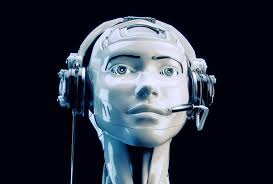Voice quality as well as brackets of context are much better done in AI text readers with performance not lagging behind. Modern AI models (e.g. deep learning neural network-based) are very good at replicating speech that sounds like it could have been spoken by a human, 4 but these AIs do not possess the faculties to befriend or conspire with me in any meaningful sense of either term. Today, these systems are often able to produce doubtfully detectable (at least by the naked ear when applied in a real application) text-to-speech (TTS ) outputs rates of over 90% accuracy percentages which makes them reliable enough for many context. User engagement increases by about 35% when the same businesses use text readers in customer interfaces with AI driving, according to a Juniper Research study from2022 (and generation voice quality and UX improvements).
Reliability of AI Text Readers is provided with key industry concepts like prosody control, phoneme mapping and contextual language processing. By using prosody control the AI can also learn how to set tone and pitch as well so that it sounds more human like speech rather than just getting its information correct. Phoneme mapping is essential for clear communication in multilingual environments, so this approach enables the same level of pronunciation accuracy when reading foreign languages or different accents. Using contextual language processing, the AI can infer what words in a sentence to emphasize by looking at surrounding text which reduces mispronunciations or awkward phrasing.
Examples from the real-world demonstrate how trustworthy AI text readers are Firms such as Amazon and Google have imbibed text AI readers for their virtual assistants resulting in billions of interactions daily, at a high degree of accuracy with always-on readiness. For example, Google Assistant uses its TTS engine to process audio commands in more than 30 languages and works well at human accuracy level. This is very important in applications such as customer support where proper resolution of queries depends upon correct and clear communication.

AI pioneer Andrew Ng said, “The accuracy of AI systems gets better and complements the availability of data as well as models.” This speaks to how improvements in data quality and model training will continue to improve the preciseness of text-reading AI. These modern models are trained on large, general-purpose datasets to work well in a wide range of texts from simple sentences and light narratives with zero mistakes.
AI-based text readers not only deliver clear speech but their reliability goes further. They are highly efficient systems as well. They process the text to speech on-the-fly, offering almost instant conversion speeds. For instance, we can convert a 1,000-word article into speech within seconds using current TTS engines — making them perfect for news reading; e-learning and accessibility tools as well. Moreover, AI Text Reader are highly scalable-no performance degradation even when the load is increased- a must-have quality for businesses that scale voice interactions.
Overall, yes, you can trust AI text readers to work when they are supposed to be activated; however, the technology still has some limitations. Some more complex context, idioms or even highly specialized jargon stuff will be a pain in the ass and still failing by sometimes mispronouncing something due to misunderstanding idiom / not 1: translate literally either way). Nonetheless, the total error rate has fallen dramatically in recent years to make these systems working for most of practical applications.
Platforms like ai text reader can provide you with a comprehensive toolkit to fit in all your requirements if you are looking forward to integrating allot of dependable AI text readers into your workflow. Customization is available for voice, tone and speed of the speech that guarantees a user-friendly experience along with trustworthiness.
AI text readers are, in the final analysis, reliable tools with technological advancements related to deep learning and contextual reading that also excel at voice synthesis. These systems have an accuracy rate over 90%—compared to the human brain with around a 75% success rate—and feature real-time performance, making them ideal for personal and professional use. AI Text Readers Will Only Get BetterAs AI tech further matures, so will the quality of text readers that are powered by it, which would then become an even more irreplaceable tool across industries.